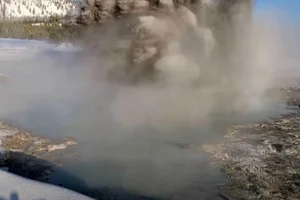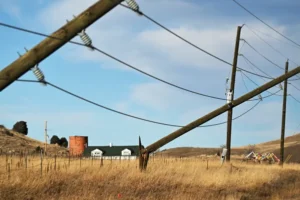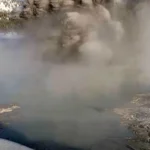Fighting Back Against the Blaze
Wildfire has been an element on the Wyoming landscape since time immemorial, but protecting people and property is a bigger challenge than ever before
- Published In: Other News & Features
- Last Updated: Sep 02, 2022
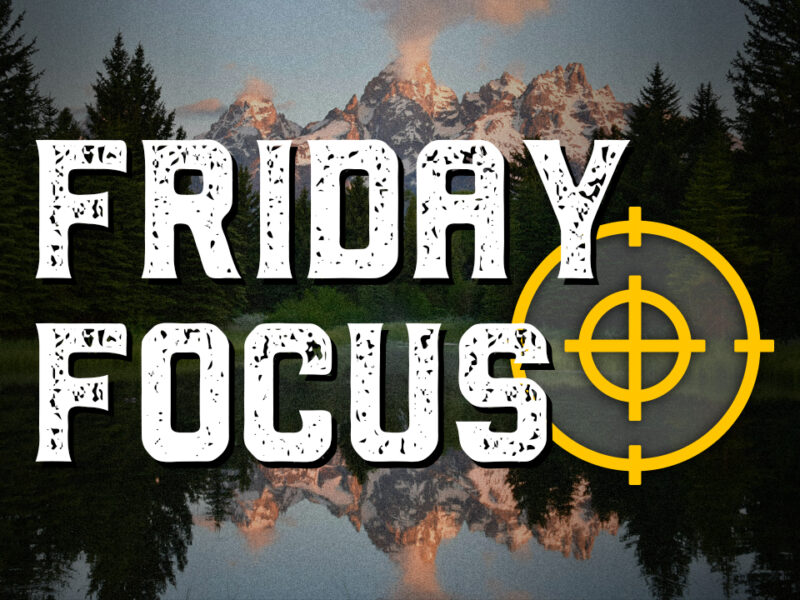
By Melissa Thomasma
Special to the Wyoming Truth
Any longtime denizen of Wyoming knows it’s unusual to enjoy clear skies in late summer. Typically, sunrises and sunsets glow with fierce shades of tangerine, horizons choked by lingering wildfire smoke. Predictions for the 2022 fire season were ominous. As vast swaths of the nation were wracked with record-breaking drought conditions, fire managers braced for a challenging season.
Recent years’ fires gave experts further reason for concern. In 2020, 828 wildfires burned 339,783 acres in Wyoming; over 85% of losses were the result of human-caused fires.
Jerod DeLay, Assistant State Forester and Fire Management Officer, keeps a close eye on wildfire conditions and suppression tactics statewide. With a degree from the University of Wyoming in Wildlife and Fisheries Management, he launched his career with the U.S. Forest Service, and over two decades, accumulated certifications in wildland firefighting leadership. In March, DeLay joined the Wyoming State Forestry Division, which stewards 263,000 acres of forested trust land and oversees fire management on 3.6 million acres.

The Wyoming Truth spoke with DeLay about managing wildfires, how the season has unfolded and what can be expected in coming months. What follows are excerpts from the interview.
Many people aren’t familiar with the State Forestry Division. What is its role, and what is your job within it?
DeLay: There are three legs of the State Forestry Division. There’s the timber operation end of it, which deals with timber sales on both commercial and non-commercial sides. Then there’s the grants and agreements side that federal grants get funneled out through to communities and other departments. Then there’s the fire management side.
I oversee the fire side as one of the Assistant State Foresters, and there are Assistant State Foresters for each of the other elements.
What’s your role as a fire manager during fire season?
DeLay: There are five [fire] districts in the state, and a great deal of what I do is coordinate with the District Foresters and the Assistant District Foresters. If there is a fire in one of those districts, my role is letting them know about it, whether it’s on state, private, or federal ground. We assist those folks, and they assist us — it’s a good partnership between cooperators like the counties, the municipal fire departments that do suppression, and the federal side of Bureau of Land Management and Department of the Interior. We have a strong partnership with the US Forest Service as well.
My role is also working with our SEAT program — single-engine air tankers — we have a 90-day contract with those . . . For fire suppression, those can respond to anywhere in the state. We also have a Type Three helicopter program that’s on 120-day contract, and we have a four-person Helitack crew, based out of Glenrock. We also take in detailers, whether it’s from State Forestry, counties, or federal resources for about two weeks at a time, which helps boost our numbers on the Helitack crew.
How would you describe the 2022 fire season?
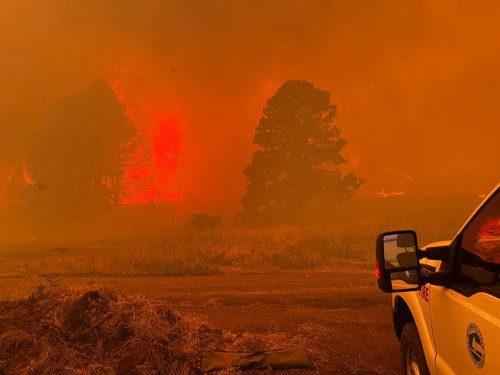
DeLay: You know, the season has been relatively mellow. Initially, the outlook was above average on the Eastern side of the state. In August, September, [risk] typically expands to the northern end, extending out towards the Western side. We had a pretty active monsoon season, which means we received some timely rain. It is pretty unusual for Wyoming to have the moisture that we had in August and through the end of July. It has really moderated the fire season so far this year.
That sounds like a pleasant surprise.
DeLay: Right. It’s unusual to be in a preparedness level three in the middle of August. We’re usually at a four, or even our highest level of five. It seems that the fire season goes longer, droughts are longer, but we do get some reprieve off and on where it moderates a bit. But it seems like the time between those moderating events is longer now, too. Lately, we’ve had a later snowfall and an earlier snowmelt, which has extended the overall season …
What big challenge are you facing now?
DeLay: One is fuels mitigation—having the right treatment, the right place and having the treatments deployed on a large scale that can make a difference.
Also, it’s the longer duration fires that we have. When I started, there very rarely was a fire over 10,000 or 20,000 acres. That was a big fire 20, 25 years ago. Now, you don’t bat an eye when you see a hundred-thousand-acre fire. . . . And more long-duration fires. In two weeks, we usually had a handle on fires. Now, just in Wyoming, we’ve had hundred-day fires, incidents that have gone on all summer long.
Why are fires getting longer and bigger?
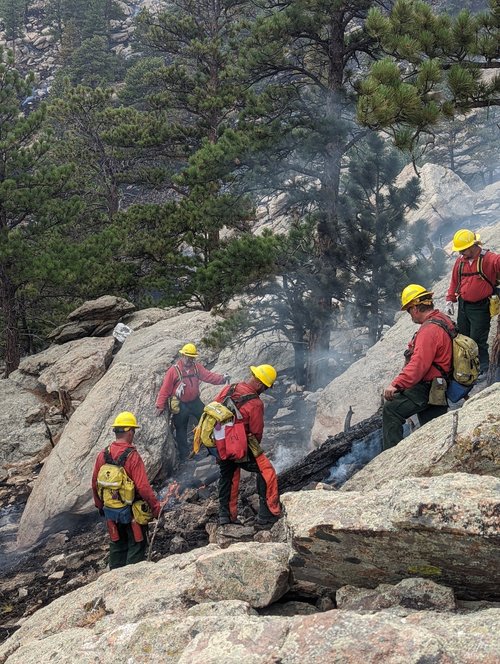
DeLay: It’s a combination of a whole lot of things. Long duration drought times, accumulation of fuels from the bark beetle epidemic, a lot of dead trees are 20 years old, and now are starting to fall over and accumulate on the forest ground. The sun is able to hit that ground now, which adds a grass and brush component: more fuel than has been in those areas in a long time. It translates to rapidly spreading fires that are difficult to contain.
The absence of fire on the landscape is a factor, too. Fire suppression has been successful over the last hundred-plus years. Now we’re paying some of the costs of that. We look at things differently now; we have to take a different approach. Sometimes you just don’t have the manpower that we once had to throw a big number of resources at a fire. Sometimes when you have a big fire, and it’s an area with a lot of value, you put more people on it, which leaves less people to take on other fires in other places.
Can you describe a recent significant incident you were involved in?
DeLay: For me, what jumps to mind is the 2020 Mullen Fire on the Medicine Bow National Forest. It had been a slower activity year around the region. That fire started September 17th. It had already snowed in that area, but it warmed back up and there were other fires getting lots of attention and resources. When Mullen started, getting enough people and management was difficult. We asked for an incident management team that first night, and one wasn’t available for five days. So we had to hang on to it.
When I turned it over [to another command team], it was 14,000 acres. Ultimately, it went to 176,000.
So a mellow early season doesn’t preclude the chance of large late-season fires.
DeLay: Yes. For now, we’re still under the influence of some monsoonal moisture. Data I’ve seen suggests the weather pattern changing, more towards a typical weather pattern for late season. Typically we have a seasoning-ending event mid- or late September. Historically, there’s about a 75% probability that we have one. . . .
The best thing that community members can do to help us — regardless of how the weather goes — is if you see a fire, get it reported in a timely fashion. We can get a good location on it, and can quickly send people, which can make all the difference.

